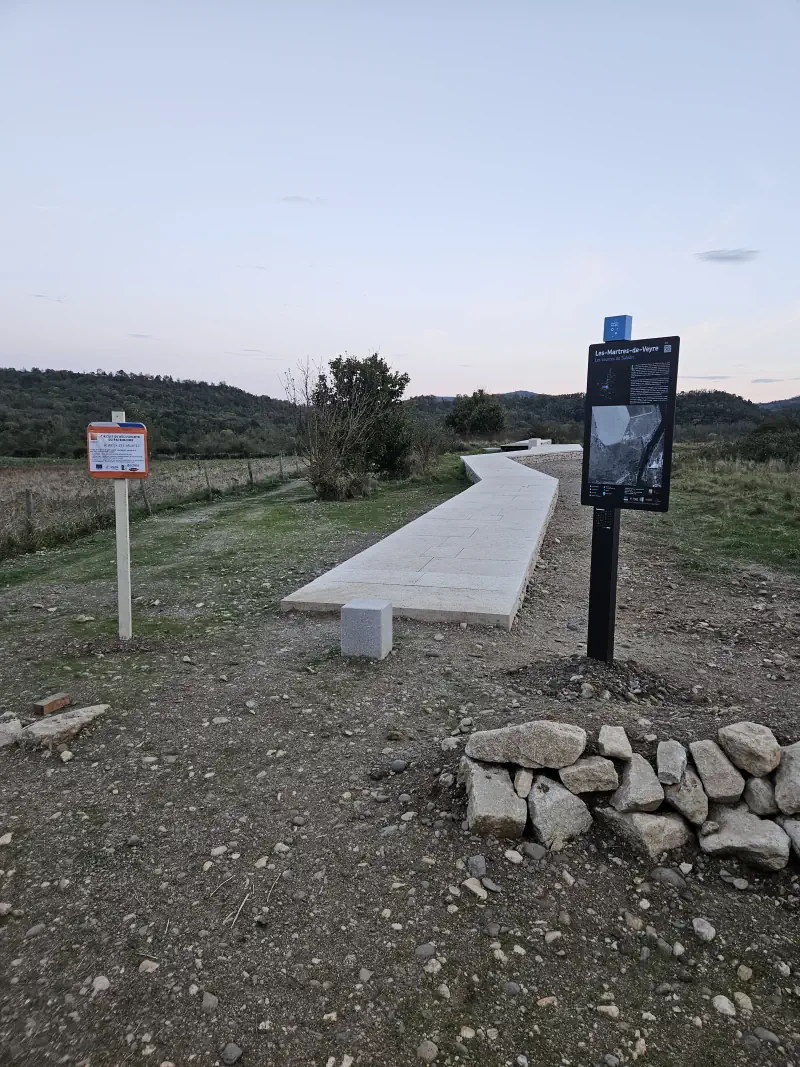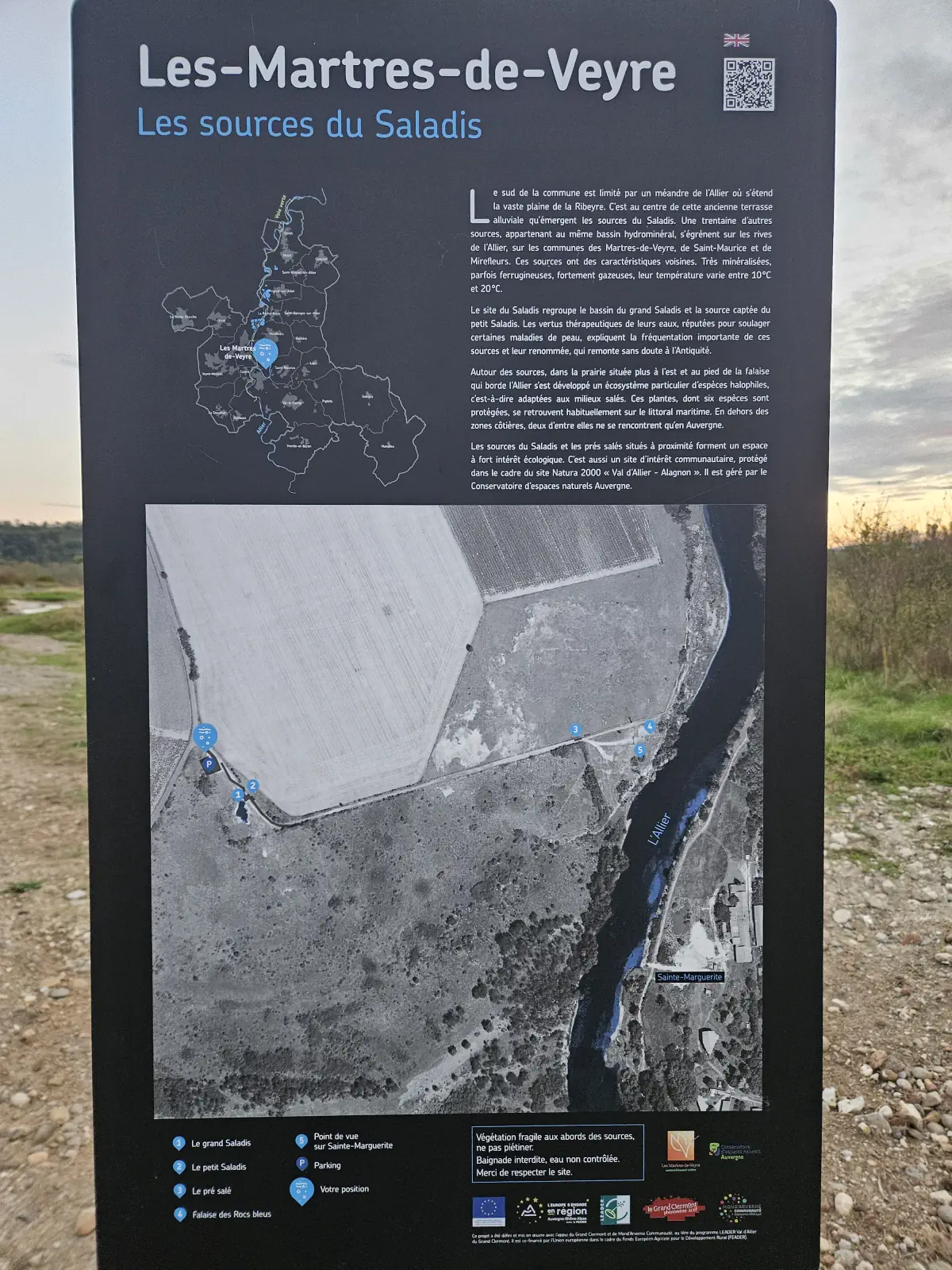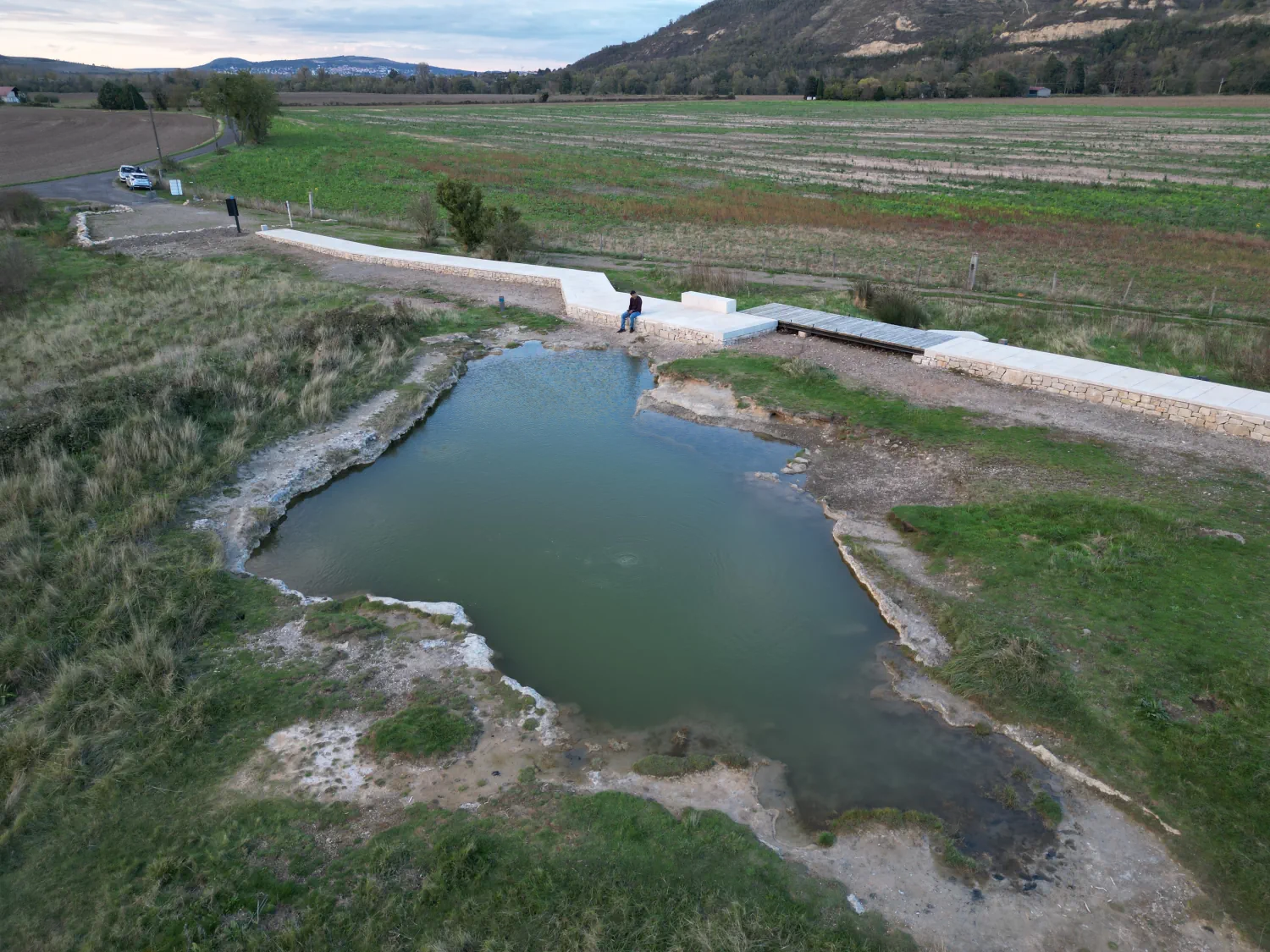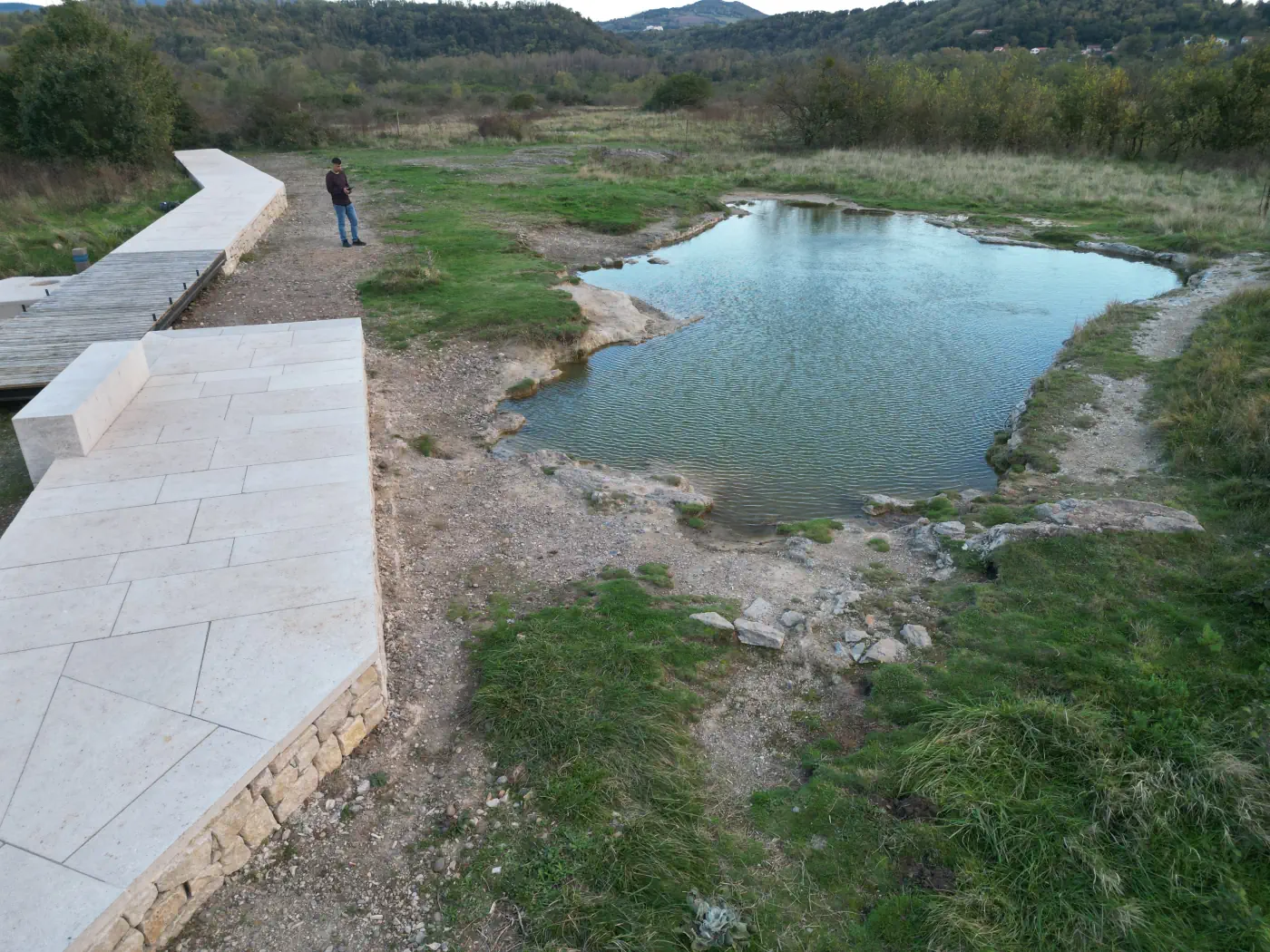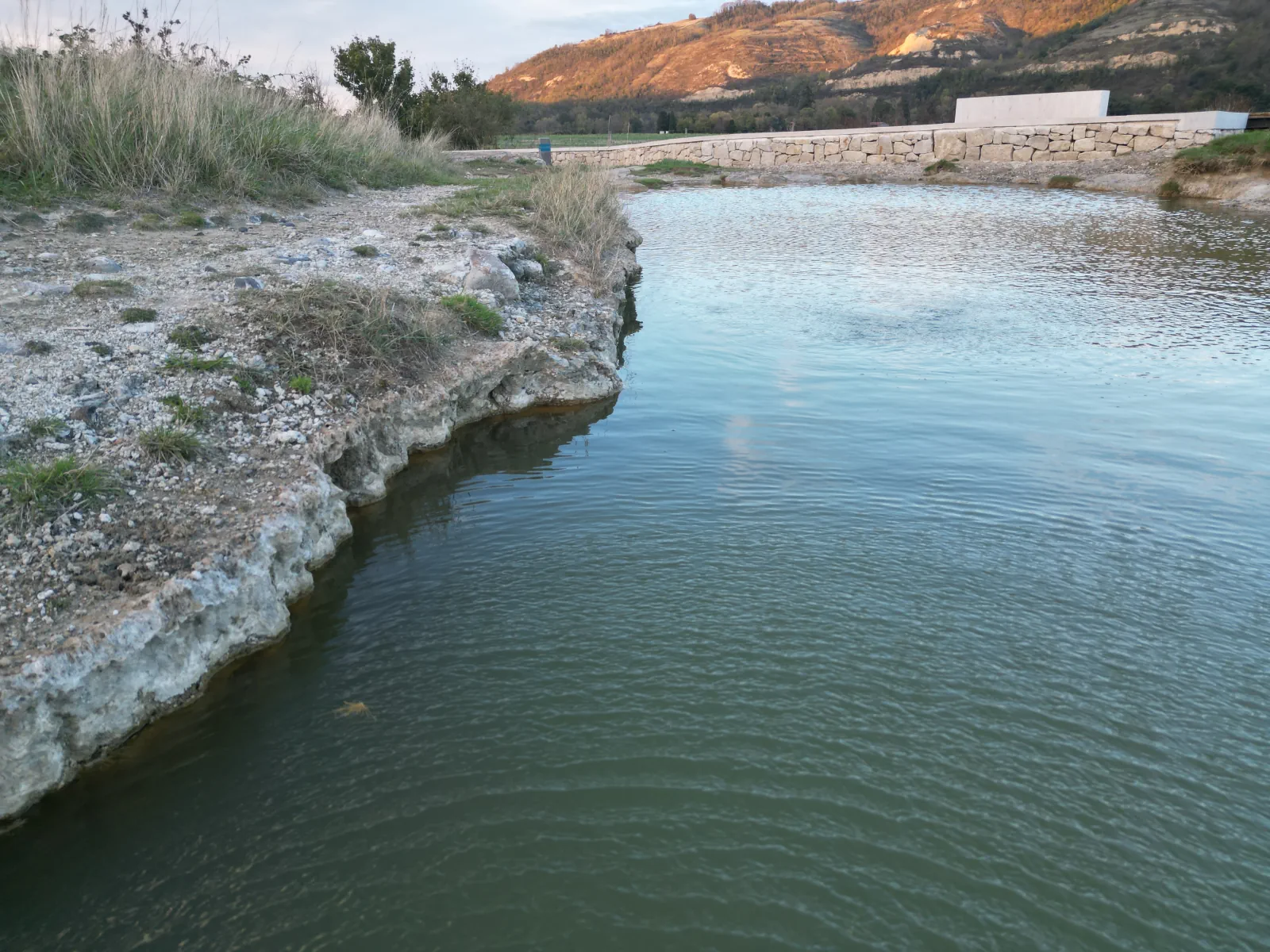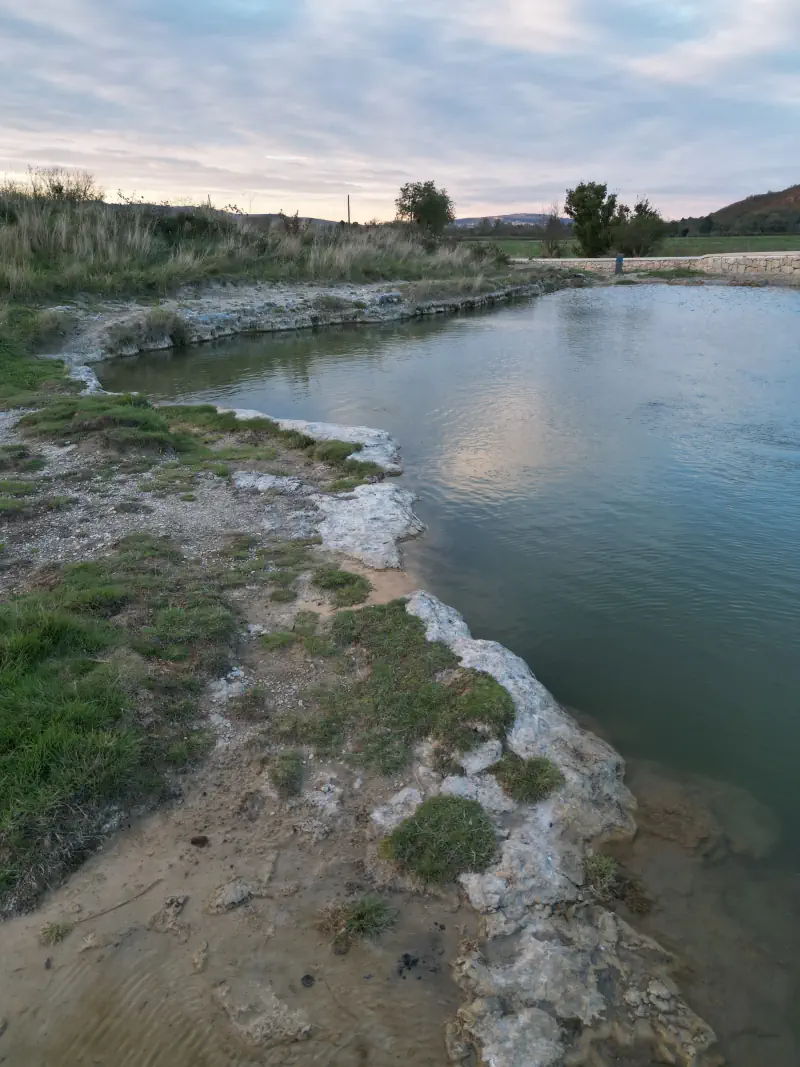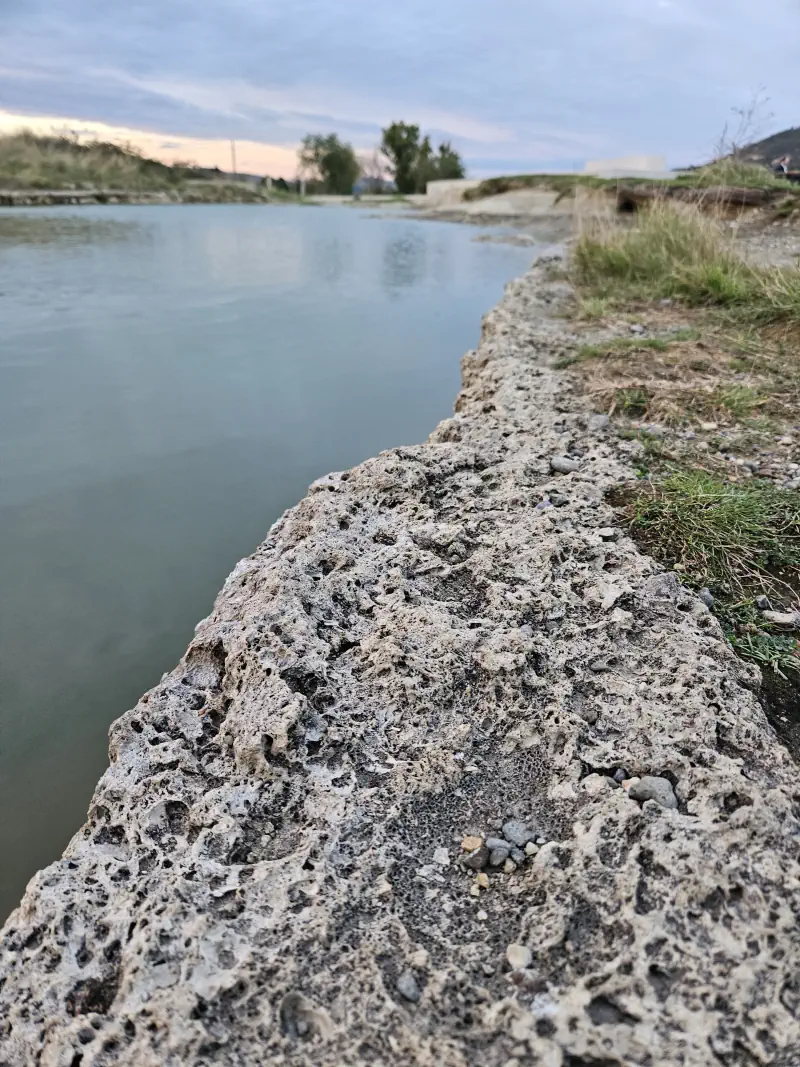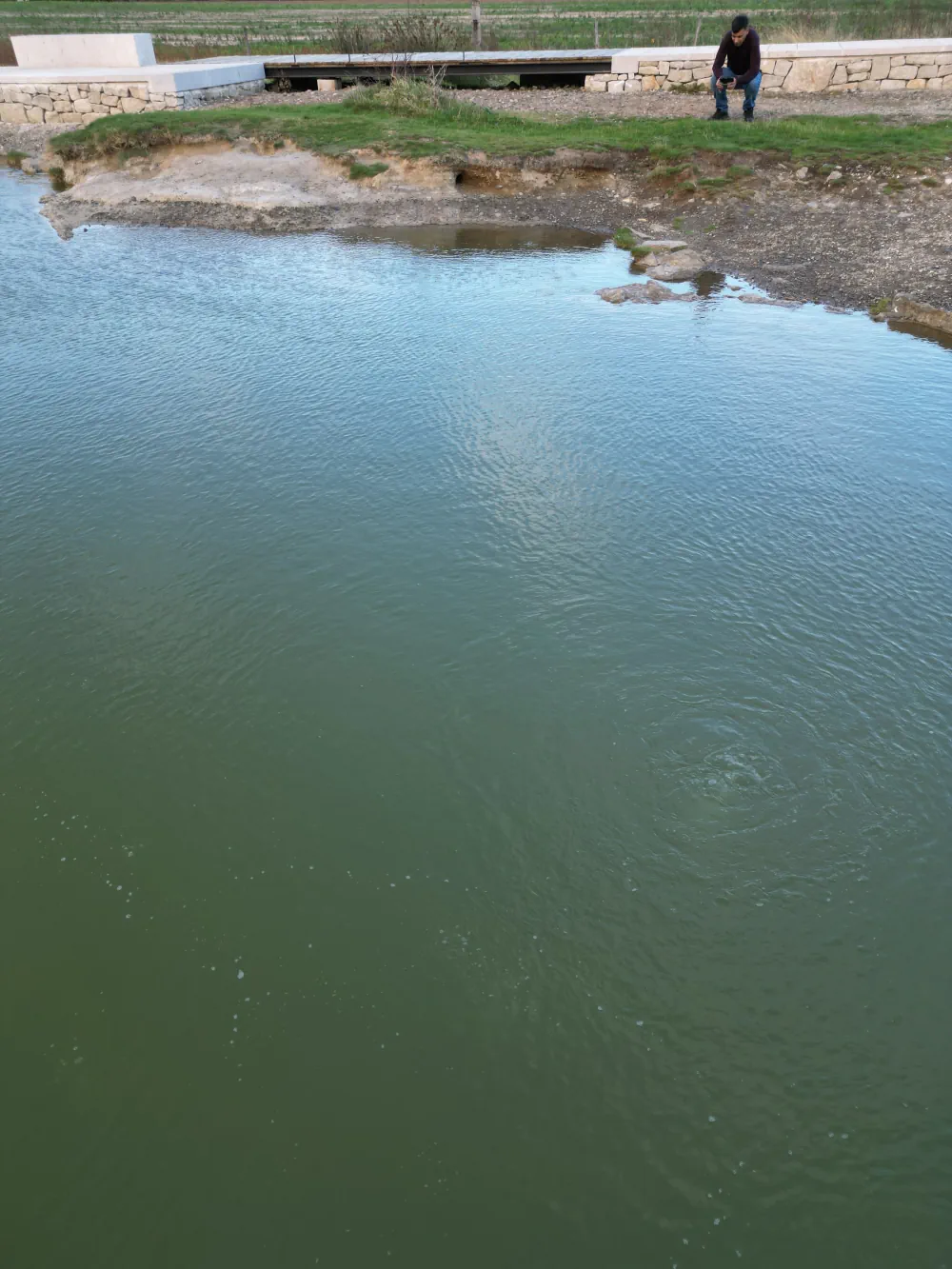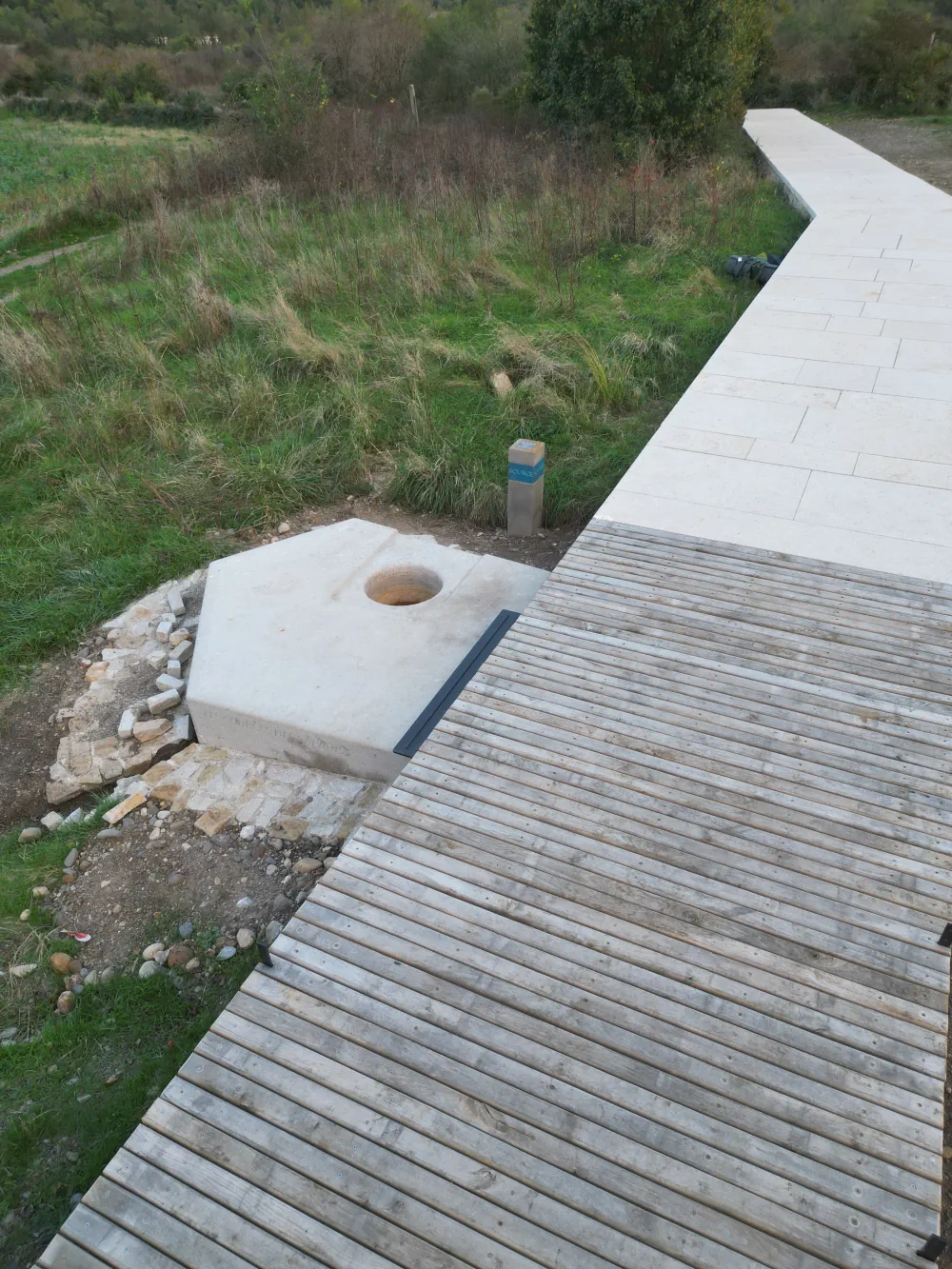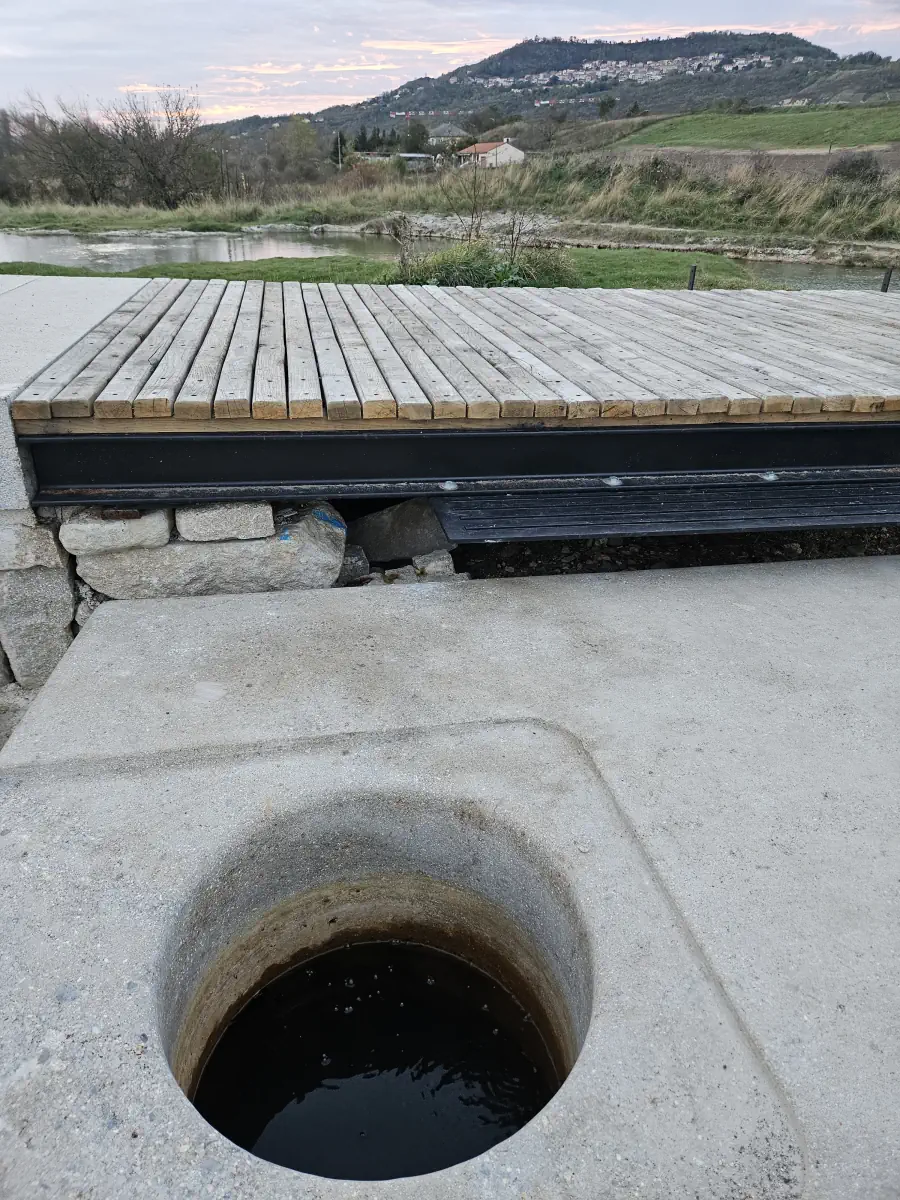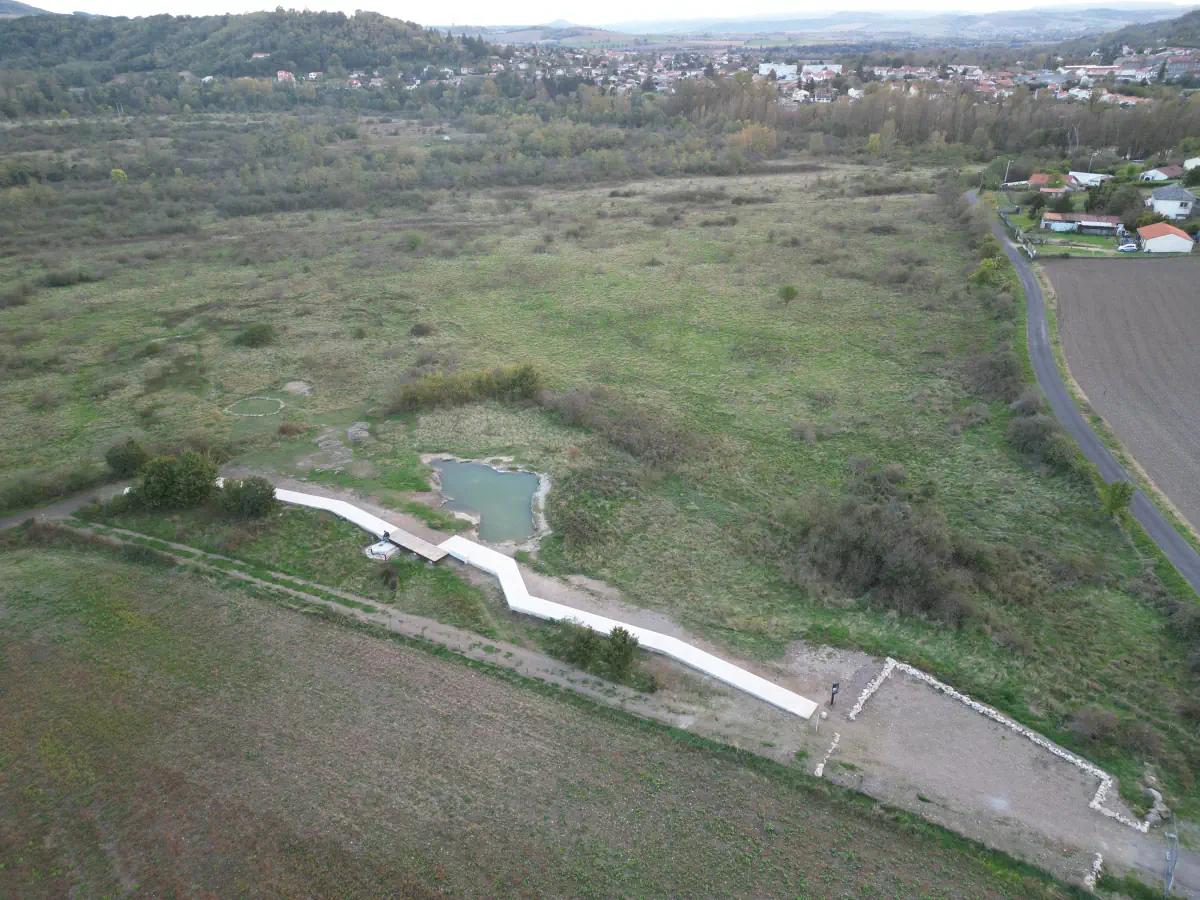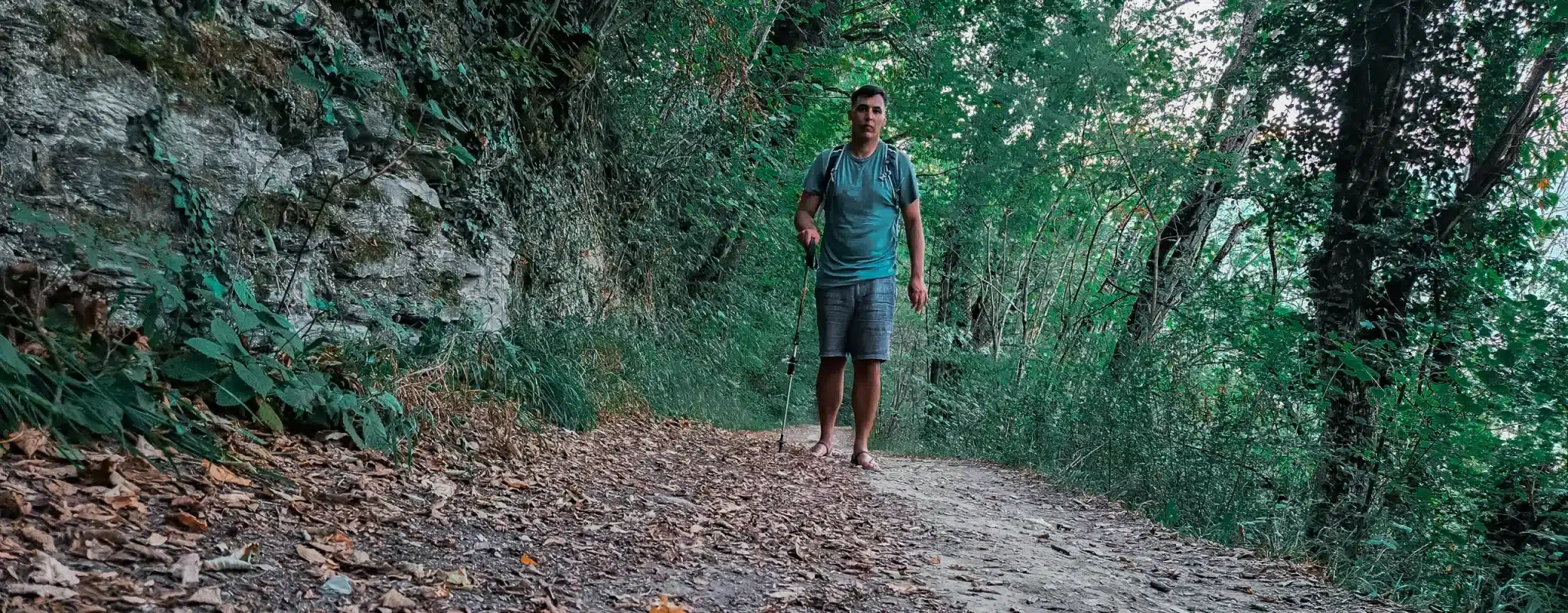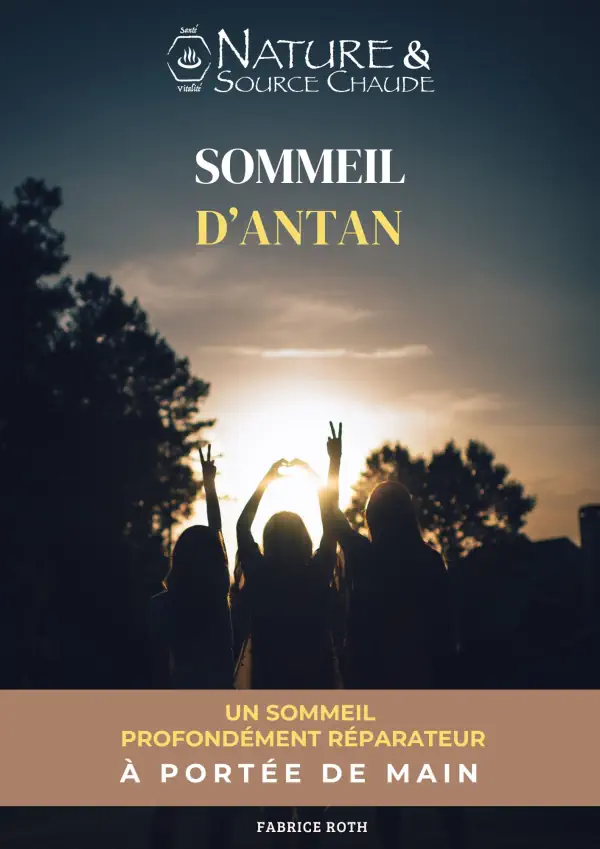Visit the Saladis springs in Les Martres-de-Veyre, Auvergne
- Nature Source Chaude
- Published on
- Updated on 22 July 2025
The town of Les Martres-de-Veyre, located in the Puy-de-Dôme department, is home to many springs. They originate from a large fault in the subsoil, along which the Allier River appears to flow. The water rises to the surface from deep underground, carrying carbon dioxide, minerals and trace elements with it.
The Saladis springs are among the most famous in the region and give rise to a large thermal pool. Come and experience this enchanting location for yourself — it is easily accessible and remarkably well preserved.
Table of Contents
The site
The Saladis Springs are within walking distance of a nearby car park.
When you arrive, the Allier River will be out of sight, but if you follow the path on the left, you will reach its banks within minutes. This route crosses the vast Ribeyre Plain, where mineral waters rise to the surface from deep within the earth. Alongside the river, there are some lesser-known springs (such as the Tixier spring and the Rocs Bleus spring) that gush out discreetly.
On the Saladis springs site, which is classified as a Natura 2000 area, there is more intense tourist activity. A pool that looks like a pond attracts a lot of attention from visitors.
Next to it is a long, clearly defined stone path that provides pedestrians with access to the site. This path leads to a wooden viewing platform where you can admire the springs up close. At the entrance, you will find information board providing educational insights into the Saladis springs. Be sure to follow the path to discover the site’s unique features.
The fields surrounding the site to the north and east are somewhat bare and monotonous (see the photos below), which provides a striking contrast. While one side is barren, the other is covered in shrubs and trees, with wild springs — including the Grand Saladis spring — scattered throughout the landscape.
Although the Grand Saladis spring is easily accessible, it has never been officially exploited, despite probably having been known about and used for thousands of years.
Practical information:
Entry is free.
There is a car park at the entrance.
The site is classified as a Natura 2000 area and is managed by the Conservatoire des Espaces et Paysages d’Auvergne.
Bathing is not permitted.
La source du Grand Saladis
This irregularly shaped pool is a true masterpiece. Although visitors can admire it, bathing is not permitted.
The Grand Saladis spring was so important that it almost earned its own spa establishment. But it didn’t.
Although left uncovered, this pool is not without interest, with its characteristic flora and fauna and its mineral-rich waters that promote their development.
The halophilic plants found on the site, which typically grow near the coast, include Glaux maritima, Plantago maritima, and Spergularia marginata.
A little bit of history:
When thermalism came back into fashion in the 19th century, there was an attempt to exploit these waters. However, the flow rate was too low to allow a large-scale bottling line to be installed. The rudimentary catchments that were put in place were unable to increase the flow. Nevertheless, these waters remained popular with locals. They came to fill their bottles or, less commonly, to soak in them.
In 1882, the commune leased the Saladis spring to Dr Roux, who planned to exploit it. In the hope of increasing the flow, he chose to use explosives rather than drill a borehole. Unfortunately for him, however, the pool expanded. Disappointed with the results, he finally gave up. At that time, the pool was already in its current form, measuring five metres in depth. However, recent drilling investigations suggest that it is now eight metres deep!
Around 1900, another entrepreneur became interested in the site, inspired by the mineral water craze sweeping France. In his advertising brochure, he attempted to attract investors by presenting an ambitious project: ‘The aim is to create a first-rate establishment at Les Martres and bring luxury to all the buildings, in keeping with the extraordinary bounty that nature has bestowed upon this region‘.
Although the project’s estimated annual revenue was appealing, based on visitor and tourist numbers as well as bottle sales, it never came to fruition.
It is now known that the temperature of the Grand Saladis spring is consistently around 20–22 °C, and that it has a high mineral salt content.
However, the Allier flooding (an unusual event) may temporarily cause the pool water temperature to drop by a few degrees.
In the past, the main objective of thermal medicine was to induce profuse sweating through prolonged, repeated full-body soaking. Due to the temperature of the water, this could only be achieved by heating it artificially — a practice that is widely used today. On the other hand, frogs enjoy these moderately warm waters🌡️.
In addition, the water’s journey through thick layers of limestone sediment adds carbonates to it, which are responsible for forming limestone deposits. This travertine then forms a layer on which the water in the pool rests. The thermal water then emerges from the natural ground in a series of bubbles, surrounded by travertine. To learn more about the importance of the natural ground for a hot spring, please read the article ‘The soil, base layer and living medium of a hot spring‘.
These waters are naturally radioactive, as well as being rich in iron and carbon dioxide. This can be seen from the strings of bubbles that are visible on the surface.
This spring was once renowned for its therapeutic properties. Locals would bathe here to treat conditions such as eczema, skin diseases and rheumatism. Older residents still remember this well.
These waters have clear advantages over an ordinary bath, with a depth of up to eight metres. Due to their large volume, they are more energetic and penetrate the body more deeply. They stimulate the body more effectively. Read the article: ‘The amazing health benefits of a hot bath‘. However, as bathing is no longer permitted, the site is no longer a place where people who are ill go.
Finally, these deep, murky waters may hold a few surprises. Archaeological excavations at the bottom of the pool have unearthed human bones and a wooden statuette dating back to the Gallo-Roman period.
La source du Petit Saladis
Although the waters of the Petit Saladis spring and its neighbour appear to originate from the same source, the latter is slightly different. While their composition is similar, the water from the Petit Saladis spring is drinkable. The local people have always valued the medicinal properties of this spring and still drink from it today.
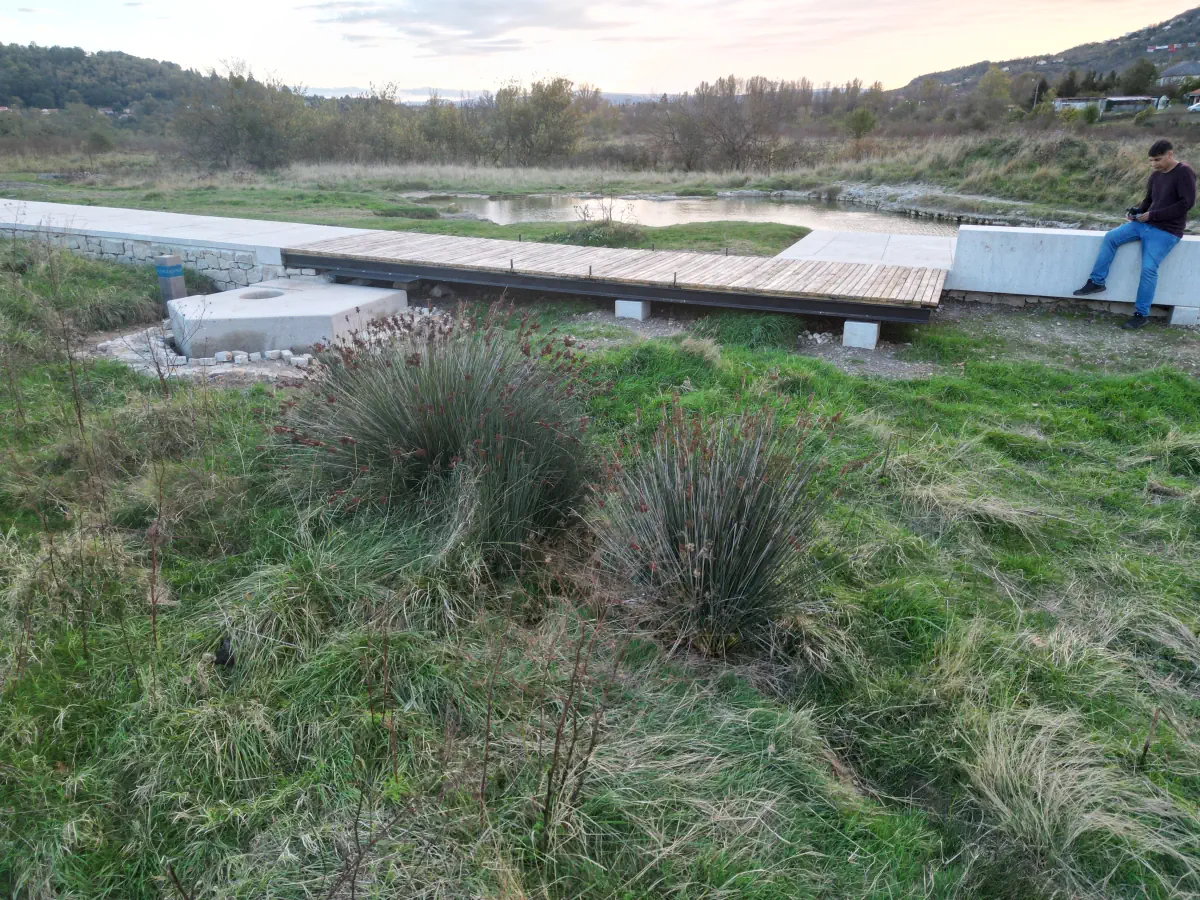
Water gushes out into the carved block of Blavozy granite at a low flow rate. Its temperature is similar to that of the Grand Saladis.
Finally, on the opposite bank, you will find the Sainte-Marguerite springs, which were formerly exploited by the old spa resort of the same name. The Brissac geyser alone is worth a detour. Read our article ‘Visit the Sainte-Marguerite springs in Saint-Maurice-ès-Allier‘, to find out more.



